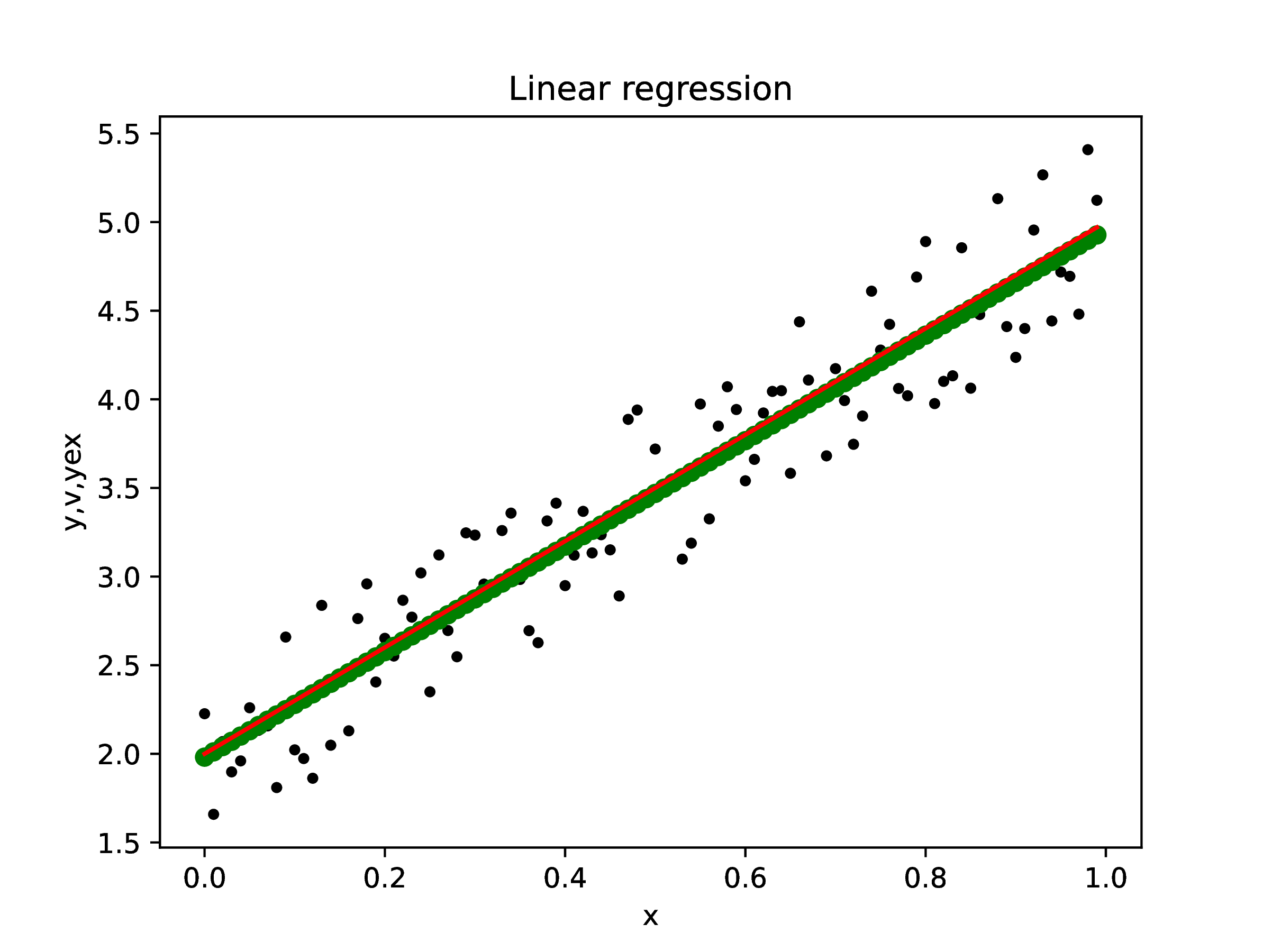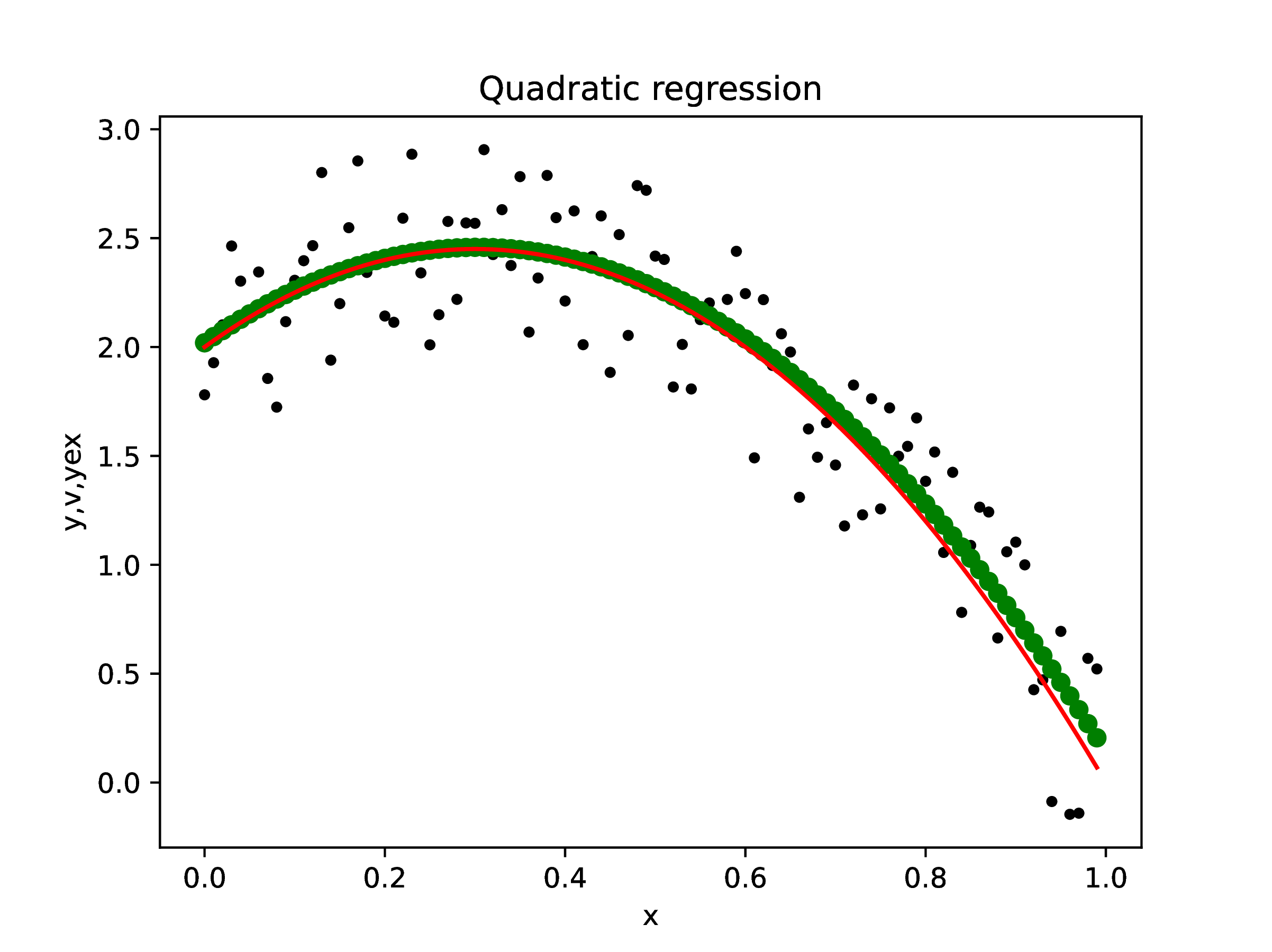Definition.
The Dirac delta symbol
is defined as
Definition.
A set of vectors is said to be orthonormal
if
Given vectors
Initialize ,..,,
;
;
Orthogonal projection of a vector along another vector
|
|

Definition.
The orthogonal
projection of
along direction ,
is the
vector .
-
Scalar-vector multiplication commutativity:
-
Matrix multiplication associativity: ,
with
Definition.
The matrix
is the orthogonal projector along direction ,
.
The
case: polynomial interpolation
|
|
Definition.
The polynomial
interpolant of data with
if
is a polynomial of degree
that satisfies the conditions ,
.
∴ |
m=3; x=(0:m-1)./m; c0=2; c1=3; c2=-5; yex=c0.+c1*x.+c2*x.^2; |
∴ |
A=ones(m,3); A[:,2]=x[:]; A[:,3]=x[:].^2; QR=qr(A); Q=QR.Q[:,1:3]; R=QR.R[1:3,1:3]; |
∴ |
c = R\(transpose(Q)*yex) |
|
(3) |
Note that the coefficients used to generate the data are recovered
exactly.







